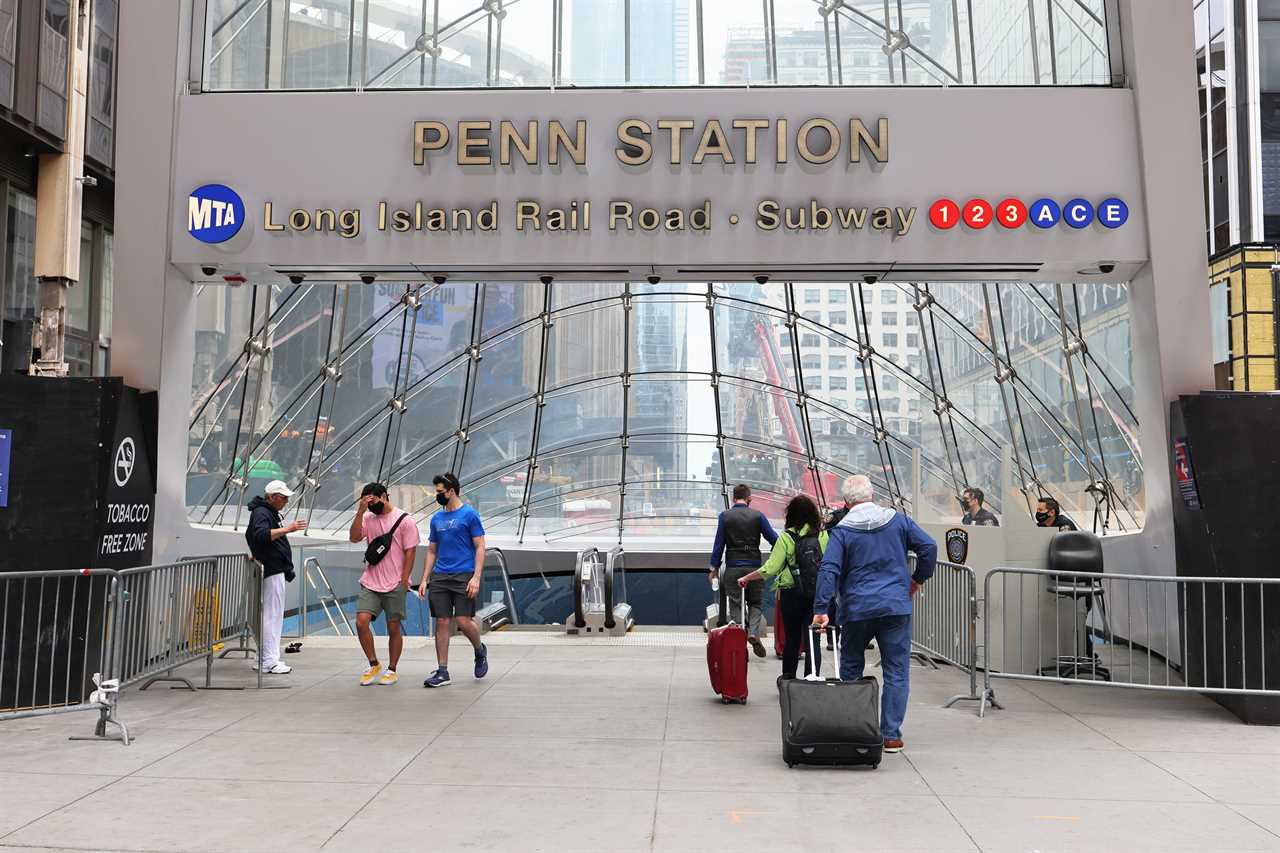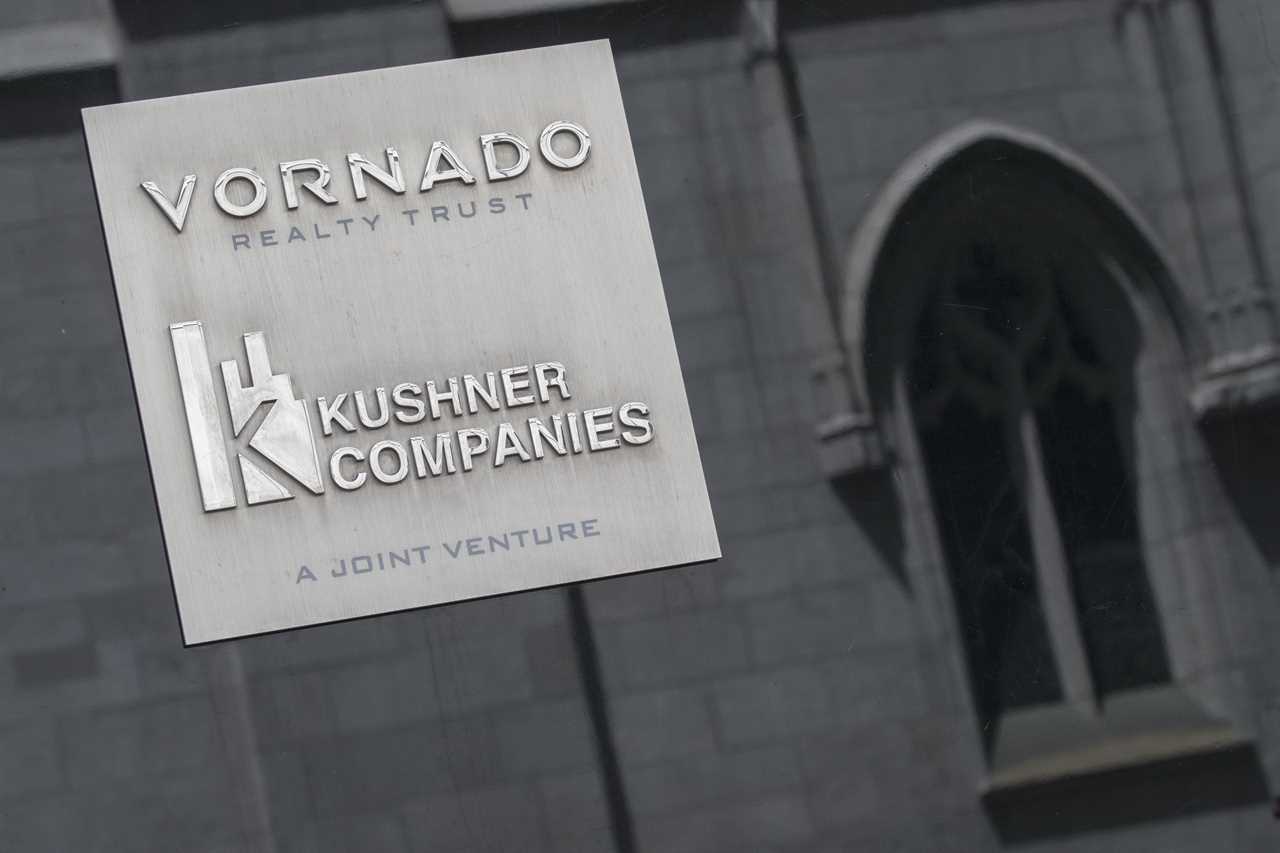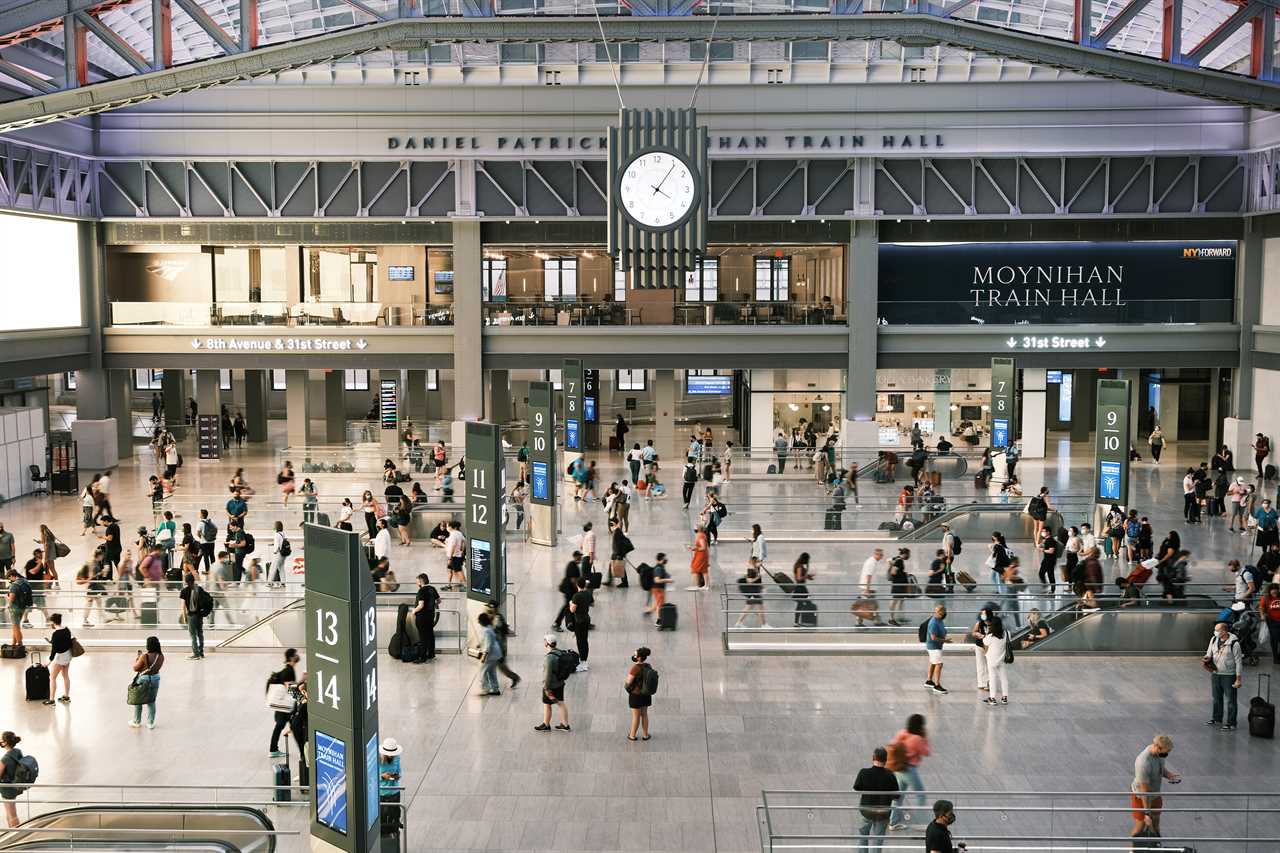
NEW YORK — Steve Roth, the chair of Vornado, the largest commercial landlord in New York City, had a piece of advice in 2010 for aspiring city planners: a blighted community is your friend.
In a wide-ranging speech to Columbia’s Graduate School of Architecture, Roth recounted how he deliberately let the Alexander’s department store on Manhattan’s Upper East Side sit vacant for more than three years before redeveloping it, even as his own mother complained of “bums sleeping in the sidewalks of this now closed, decrepit building.”
“And what did I do? Nothing,” Roth said at the time. “Why did I do nothing? Because I was thinking in my own awkward way, that the more the building was a blight, the more the governments would want this to be redeveloped; the more help they would give us when the time came.”
“And they did,” Roth concluded.
More than a decade later, Vornado is benefitting from a similar scenario to push through a massive development project in the heart of midtown Manhattan without any oversight from the city. To do so, Vornado has offered an appealing carrot: an opportunity to transform the 60-year-old Penn Station from a maligned rail hub to the pristine station it once was.
Depending on who you ask, it’s either the biggest windfall to a politically-connected private developer in recent history, or the best shot at fixing North America’s busiest train station.
The proposal would erect up to nine new skyscrapers, mostly filled with bespoke office space. It would primarily benefit Vornado, as the majority owner of more than half the sites covered under the plan.
Instead of paying potentially millions in city property taxes, Vornado will finance upgrades to Penn Station that include new entrances, an underground concourse to connect to more train lines and public outdoor space. Vornado pays roughly $38 million annually in property taxes for the nearby Penn 1 building, which is much smaller than the skyscrapers being proposed that would benefit from property tax breaks.
New York state would also reserve the ability to raze 50 buildings, including residential properties and a 19th-century church, to build nine new tracks and five platforms to the south of Penn Station. That piece of the plan would still need federal approval. Details of the wider project could change when a final version is posted this summer.
If approved, it will be the biggest development project in New York City history, just surpassing the 18-million-square-foot Hudson Yards development on the west side of Manhattan. Hudson Yards also benefited from similar tax breaks and claimed the title when it opened in 2019, surpassing Rockefeller Center in size.
But the Vornado plan is its own beast.
While Hudson Yards and Rockefeller Center were initiated by city government and developed privately, the Penn Station plan is being entirely overseen by a state-controlled agency, the Empire State Development Corp.
The entity is responsible for an array of projects — all with their share of controversy — including the redevelopment of the World Trade Center. But the Penn Station project stands out in just how much land it takes from city control, experts said.
“This is New York City. This isn’t Podunk,” state Sen. Liz Krueger, who represents the east side of Manhattan, said in an interview. “It’s a city of eight and a half million people with a government that’s larger than many other states in this country. And we had, under Governor Cuomo, basically a governor who believed the city of New York couldn’t possibly handle responsibility for its own destiny.”
Vornado has donated heavily to the lawmakers behind the project. Roth and two of his trustees each gave the max of $69,700 to Gov. Kathy Hochul’s campaign. Former Gov. Andrew Cuomo benefitted from $384,000 in political donations from Roth and his wife between 2005 and 2021.

In 2018, Cuomo set the groundwork for the state to swoop in and oversee the private development by calling the area around Penn Station a “public safety hazard” in the state budget. Under the state Urban Renewal Development Act, the Empire State Development Corp. has the power to bypass local authority over real estate projects if it deems an area to be blighted, which it officially did in 2021. Poor accessibility, a higher felony rate and shuttered businesses were among the factors that earned Penn Station the designation.
While the tactic may have made Vornado’s path easier — as Roth unknowingly predicted it would more than a decade earlier — opposition abounds over the city’s reduced role.
‘A bad precedent’
Critics, which include good government groups and state lawmakers, argue bypassing the city’s typical land use proceedings strips the project of necessary oversight.
“To take over a big part of core Manhattan just because you have a developer who wants to build their own Hudson Yards — that is something new and it’s a bad precedent,” said Nicole Gelinas, a senior fellow at the fiscally conservative Manhattan Institute.
The state still hasn’t released major details on the project’s financing, like the types of tax breaks and incentives Vornado will receive. It’s unclear when the buildings will start generating revenue and how much, or how much the city will lose from giving up the tax revenue. And what happens if the towers, composed mostly of office space when hybrid work is becoming more popular, don’t generate enough revenue? That could leave taxpayers on the hook to pay back bonds issued for the project as the megatowers sit mostly empty, in an area facing a long recovery from the pandemic.
“Everyone can agree Penn Station needs to be fixed and everyone can agree development near transit makes sense,” Rachael Fauss, a senior analyst at the nonprofit good government group Reinvent Albany, said in an interview. “It’s the process, it’s how it’s being done and it’s the optics of a major developer potentially getting a huge windfall for this in a secretive financing structure.”
Others question the general need for the redevelopment to fund Penn Station.
Penn Station is the busiest train hub in North America, serving 600,000 commuters before the pandemic. It houses 21 train tracks and seven rail tunnels, serving as the main rail interconnection for Boston, Philadelphia and Washington. Trains are operated by Amtrak, New Jersey Transit and the Long Island Rail Road, and there is also access to two subway lines and buses.
When Cuomo first conceived the plan, the train station was falling into disrepair. Amtrak had to conduct emergency repairs after several train derailments.
Extending the station is expected to cost $12 billion, while the renovations have been estimated at $7 billion. An ongoing effort to build new train tunnels under the Hudson River will make new tracks necessary, proponents have said.
The Biden administration’s infrastructure bill sets aside $24 billion in competitive grants for projects aimed at modernizing the Northeast Corridor. Projects that win could be covered up to 80 percent by the federal government.
Naomi Renek, the state Metropolitan Transportation Authority’s senior adviser of federal policy, said at a March board meeting that Penn Station’s reconstruction could be eligible for the funding, but that the regulations for the program haven’t been issued yet.
“Even before, when you do the math, you realize it is a liability and it is not an asset,” said Layla Law-Gisiko, a vocal critic of Roth’s Penn Station proposal and land use chair for Manhattan Community Board 5. “Now that Trump is gone and we have a bipartisan infrastructure law in the works, it changes even more this conclusion.”

There are few opportunities for opponents to crush the project, but some have their hopes on the obscure, but powerful, Public Authorities Control Board.
The board, composed primarily of state lawmakers, has the final say in public financing projects and was used to kill former Mayor Mike Bloomberg’s bid to build an Olympic stadium on Manhattan’s west side. There was talk of using the entity to quash a proposal to build Amazon’s second headquarters in Queens. The bid was pulled by the company shortly thereafter, and Cuomo inserted language in the next budget to significantly weaken its powers by giving him the authority to remove any appointees.
There had been talks about restoring the board’s independence as part of this year’s state budget negotiations, but the proposal was pulled amid negotiations that touched on everything from a new Buffalo Bills stadium to changes to bail reform.
The five-member board has one vacancy and one seat filled by Robert Mujica, a longtime Cuomo aide who still serves as state budget director. The other seats are occupied by state Assemblymembers Amy Paulin and Joseph Giglio and Sen. Leroy Comrie. Comrie, for his part, signed a March letter critical of the Penn Station plan’s lack of details that called for it to be paused.
Others point out the city, which must approve the final incentive structure, could also shape the outcome. Mayor Eric Adams, a supporter of the project, hasn’t indicated he will fight it.
“We’re still evaluating that,” Adams said at an unrelated press conference when questioned by POLITICO. “I think it’s time to do something new in the Penn Station area.”
’No time for politics’
Much of the state address in which Cuomo unveiled his intent to seize control of the land around Penn Station focused on one theme: power, and reclaiming it.
Cuomo pledged to fight federal policies under President Donald Trump he saw as unfair to New Yorkers, calling the federal government “the most hostile and aggressive toward New York in history.” And in areas closer to home, Cuomo made clear he wouldn’t be shy about exerting more control over city issues like mayoral control of public schools and the New York City Housing Authority.
Taking over the area around Penn Station was just another example.
“There is no time for politics, bureaucracy or delay,” Cuomo said at the time. “The state has the power of eminent domain for just such a purpose. We must make Penn better.”
To many observers, it was the latest example in the ongoing feud between Cuomo and former Mayor Bill de Blasio, who rarely agreed on most issues of public policy. It also reflected Cuomo’s larger attitudes about infrastructure planning, as an admirer of the influential and controversial planner, Robert Moses.
De Blasio, for his part, said the project seemed developer-friendly and panned the lack of community input.
“If you think about it in the context of Cuomo and de Blasio’s relationship, it’s completely not surprising that Cuomo basically proposed taking over part of Midtown by the state,” said a former Cuomo official, who requested anonymity to speak candidly on the issue.
Hochul has made modifications to the plan, including lowering the height of buildings and adding more housing than originally conceived. But the core element of the state taking a portion of city tax revenue to fund the development remains the same.
Hazel Crampton-Hays, a spokesperson for Hochul, said “we reject the implication that political donations have influence on government decisions.”
“Governor Hochul approaches every decision through one lens: what is best for New Yorkers, including the millions of New Yorkers who travel through Penn and deserve a world-class, commuter-first transit experience,” she said in a Friday statement.
In a statement, a spokesperson for Vornado said the company "is committed to making the Penn District a commuter hub that works for everyone by actively participating in the public-private partnerships," pointing to the connecting Moynihan Train Hall as one example.
The Empire State Development Corporation has responded to some of the criticism floated by opponents.
In a March letter, the agency said it aims to have city approval before releasing a final framework. The city would be “kept whole” for property tax loss and the financing structure will cease when the repairs are complete. That includes evaluating what additional tax revenue the city should be eligible for as a result of the increase in property values, which are an active part of ongoing discussions.
Hudson Yards is a “highly successful example” of the model, the agency said, as it generated $300 million in revenue for the city in 2021.
Proponents of the project, such as MTA Chair and CEO Janno Lieber, said there are reasons to pursue a redevelopment in the area beyond the financing. Lieber, a former real estate executive who oversaw the rebuilding of the World Trade Center, said it aligns with the state’s efforts to cut car use by putting jobs next to a major rail hub.
“What could be more important than putting the best jobs next to mass transit from a climate change standpoint,” Lieber said at a March press conference, responding to a question from POLITICO.
Real estate experts argue there’s demand for new office space that better responds to hybrid work schedules, particularly from the burgeoning tech sector. Facebook leased an office nearby during the pandemic.
“There is infinite demand for really attractive, compelling new office space,” said Kathy Wylde, president and CEO of the Partnership for New York City, which represents major city businesses.
Lieber, along with other transportation experts, also warns against banking on federal money to pay for Penn Station. The MTA is seeking funding for several projects, including new rail stations in the Bronx. Precedent shows larger transportation projects usually get a lower share of federal support, the ESD has said.
“We really have a window here with the funding and unfortunately there are a lot of unrealistic expectations that the feds are going to come in and pay for the whole thing,” said Tom Wright, president of the Regional Plan Association, a not-for-profit planning organization.
The Empire State Development Corporation is expected to put out its final plan in the summer before facing approval from its seven-member board. It’s then expected to face final vetting by the Public Authorities Control Board.
Janaki Chadha contributed to this report.
----------------------------------------
By: Danielle Muoio Dunn
Title: ‘This isn’t Podunk’: A Cuomo-era plan to dramatically alter Manhattan meets resistance
Sourced From: www.politico.com/news/2022/04/10/podunk-cuomo-manhattan-penn-station-00024206
Published Date: Sun, 10 Apr 2022 06:00:00 EST
Did you miss our previous article...
https://consumernewsnetwork.com/politics-us/-frances-identity-crisis-is-on-hold






